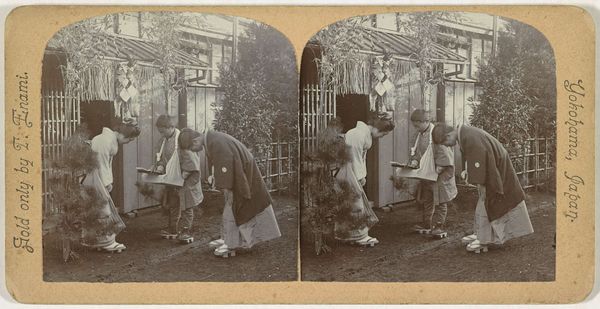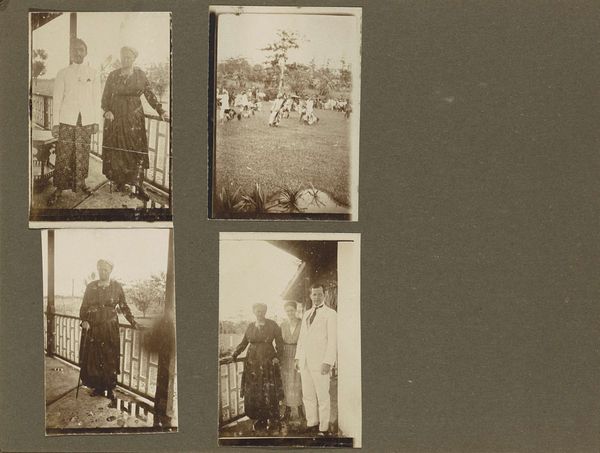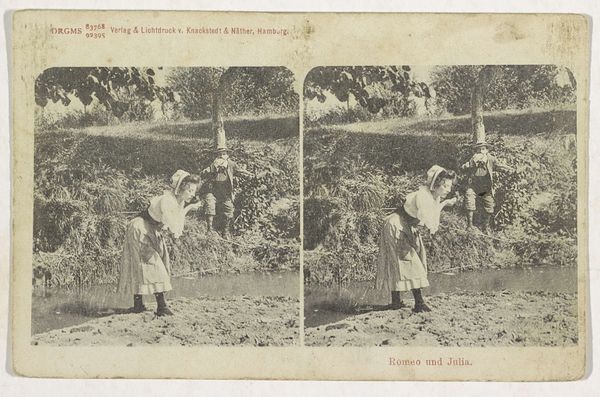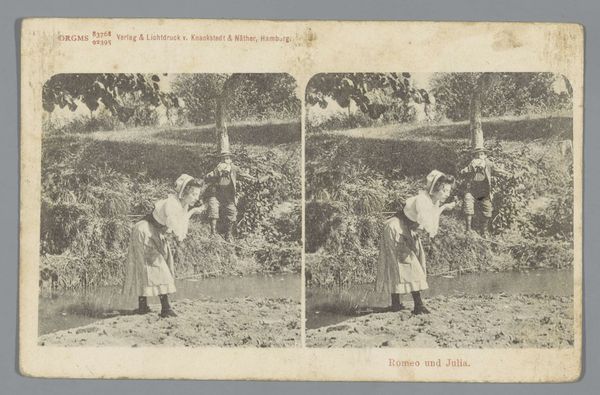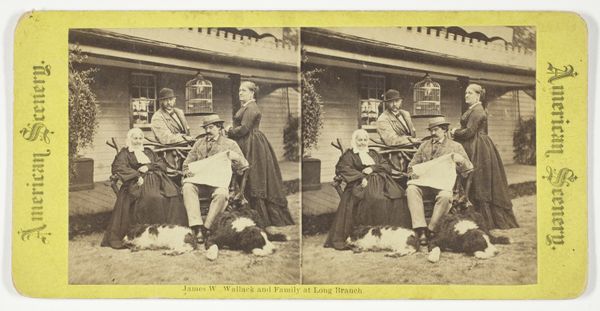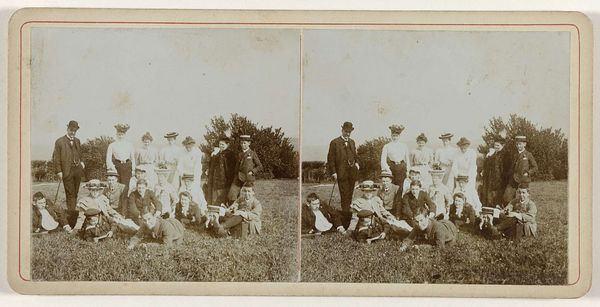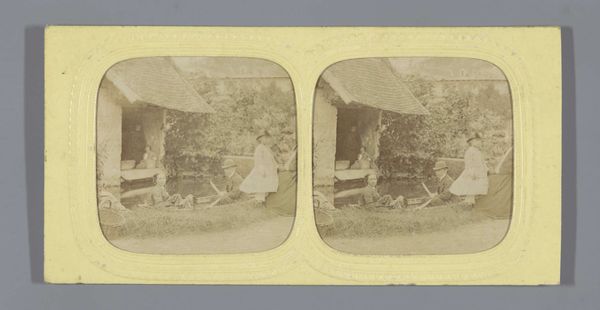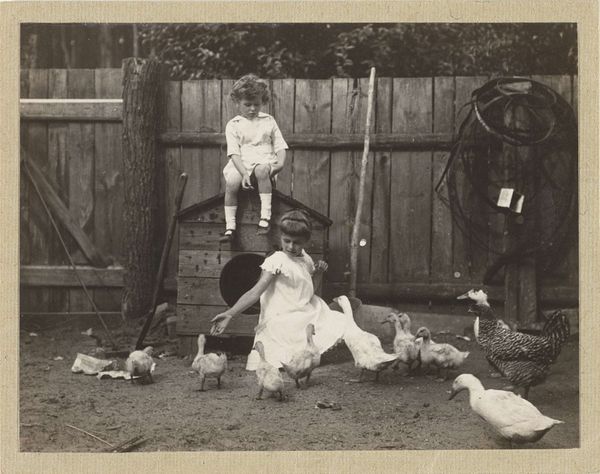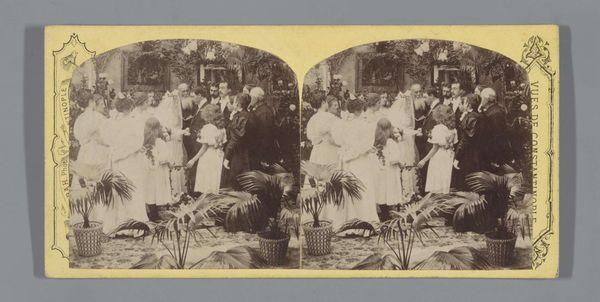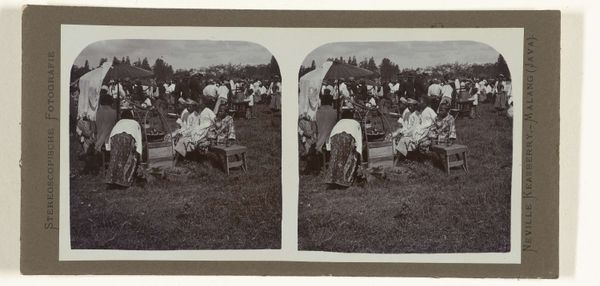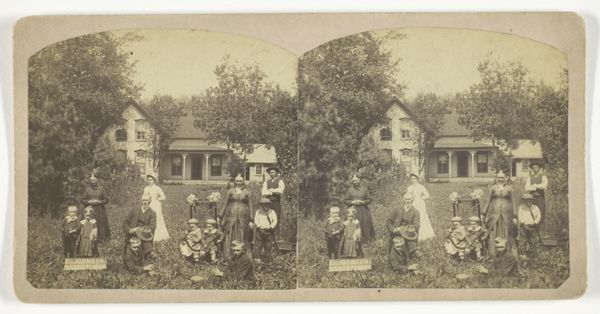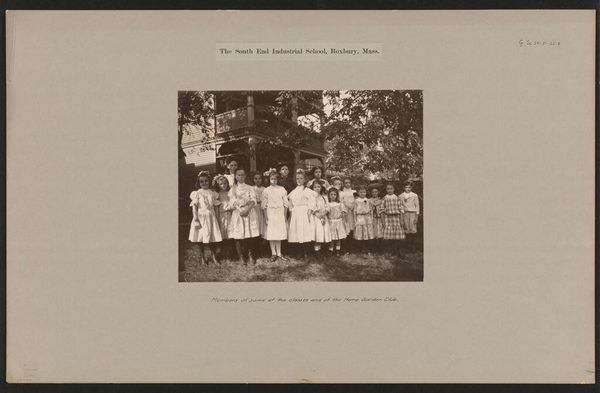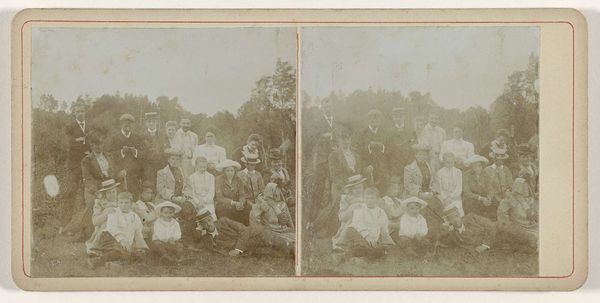
photography, albumen-print
#
portrait
#
asian-art
#
landscape
#
photography
#
genre-painting
#
albumen-print
Dimensions: height 90 mm, width 178 mm
Copyright: Rijks Museum: Open Domain
Curator: T. Enami's "New Year's Festivities in Japan," likely created between 1900 and 1907, is a wonderful glimpse into turn-of-the-century Japanese culture rendered through the lens of an albumen print. Editor: The first thing that strikes me is the delicate atmosphere. The sepia tones and the soft focus evoke a sense of tranquility, a fleeting moment captured with care. Curator: Yes, photography like this carries the weight of cultural memory. It depicts women engaged in what appears to be a New Year's game, a cultural ritual we can observe. I notice their kimono patterns and the decorative objects seem imbued with symbolic significance. What sort of symbolism could we extract from these fabrics? What memories do they hold? Editor: The process itself interests me. The albumen print, a Victorian technique that used egg whites, gave way to other methods. Think of the labour! The eggs, the chemistry, the precision needed to create multiple prints, marketed as keepsakes...these photographs were commodities. How does this image work to convey a sense of the exotic "Orient"? Curator: That tension is interesting. The commercial aspect, the "sold only by T. Enami" branding, versus the intimate portrayal of Japanese traditions. What narratives do we see in their clothes and play? It speaks volumes about Japanese values, harmony, and respect for elders through intergenerational activity, themes often promoted in such images. Editor: And yet, the materiality brings it back to earth. The albumen itself degrades over time. It's inherently fragile. This contrasts sharply with the desire to capture and preserve a seemingly timeless moment, making its ephemerality all the more poignant. Curator: Thinking about the psychological weight of these images over time is important, a glimpse of New Year's passed in Japan for enjoyment by different viewers then and now. There is so much more beneath what we see. Editor: True. It’s a reminder that every image, even a seemingly straightforward scene, is built from very particular choices, substances, and forms of labour – a window into both a culture and the material processes used to depict it.
Comments
No comments
Be the first to comment and join the conversation on the ultimate creative platform.
